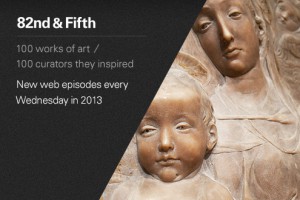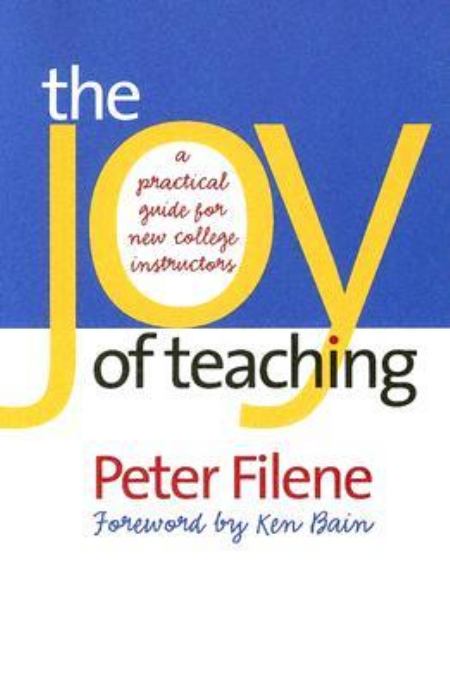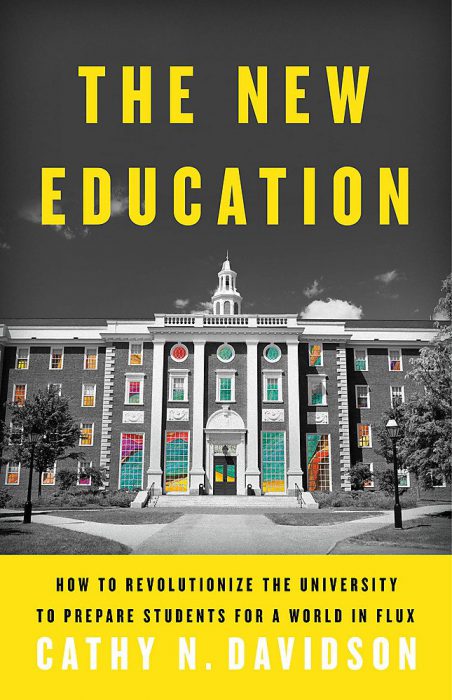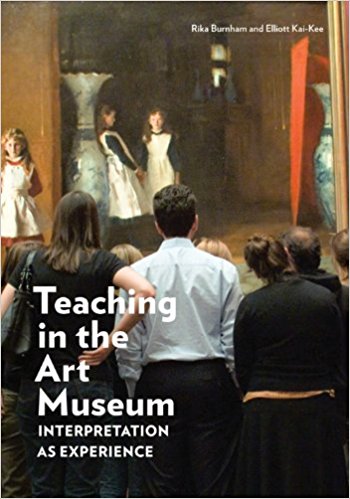AHTR Library
Resources we love...

Haywood, John. The Penguin Historical Atlas of Ancient Civilizations (New York: Penguin, 2005).
Invaluable as a teacher and/or student reading resource for early art history, The Penguin Historical Atlas of Ancient Civilizations, edited by John Haywood (2005).

MacGregor, Neil. A History of the World in 100 Objects (New York: Allen Lane, 2011).
Neil MacGregor’s A History of the World in 100 Objects (2011), available for free online in the original Radio 4 audio format, or for purchase in hard copy. This is one of the best resources from which to source short at-home readings for students.

Smarthistory.org
Smarthistory is the result of a collaboration of more than 300 art historians, archaeologists, curators and academics who want to make the highest-quality art history resources freely available to a global audience.
The site includes essays and conversational videos covering an extensive array of art historical topics (and new content is being added all the time!)

This 2013 web series, “82nd and Fifth,” is produced by the same digital media staff who created the Timeline of Art History and Connections at the Metropolitan Museum of Art in New York. The episodes are short (2-3 mins each) and focus on one work of art discussed passionately and intelligently by one curator. They work for viewing both inside and outside the classroom, and model compelling art historical narratives.

Spivey, Nigel. How Art Made the World: a Journey to the Origins of Human Creativity (New York: Basic Books, 2006).
Acclaimed Cambridge University lecturer Dr. Nigel Spivey takes viewers on a quest to comprehend mankind’s unique capacity to understand and explain the world through artistic symbols. Far more than a survey of art history, HOW ART MADE THE WORLD explores the essential functions art served in early civilizations and, in some cases, still serves in modern society.

Day, Jesse. Line, Color, Form: the Language of Art and Design (New York: Allworth Press, 2013).
Written after many years of helping ESL students tease out their written descriptions of the visual objects and sites they faced in art history classes, Jesse Day’s book is fantastic for the insightful way in which it discusses the foundational elements of art history – looking, describing, and translating that into text – and for the clear examples he offers as in-class exercises for individual students and group work.

Publisher: New York, NY : History Channel : A & E Home Video : Distributed by New Video Group, 2007.
Engineering an Empire is a fun video to introduce major cultural leaps in the global survey, and a way to incorporate discussion about architecture and structural engineering.

Bain, Ken. What The Best College Teachers Do (Cambridge, MA: Harvard University Press, 2004).
Ken Bain helps inspire innovative teaching methods through documentation of some of the best college teaching. Bain breaks down these studies to create a formulaic theory that any professor can use to structure their courses and create dynamic classrooms.

Bean, John C. Engaging Ideas: The Professor’s Guide to Integrating Writing, Critical Thinking, and Active Learning in the Classroom (San Francisco: Jossey-Bass Publishers, 2001).
John Bean’s book is a valuable resource for teachers in teaching writing and critical thinking.

Paglia, Camille. Glittering Images: a Journry through Art from Egypt to Star Wars (New York : Knopf Doubleday Publishing Group, 2012).
Camille Paglia’s Glittering Images: A Journey Through Art From Egypt to Star Wars (2012) has been reviewed very negatively by some, and her tone and choice of all-Western subject matter is certainly controversial. But that’s no reason to desert the this book entirely. It’s because her writing is so polemic that certain chapters in this book (the one on Picasso’s Demoiselles for example) can be useful to set as at-home reading that will provoke in-class discussion.

Filene, Peter. The Joy of Teaching: A Practical Guide for New College Instructors (Chapel Hill: University of North Carolina Press, 2005).
Full of new suggestions, techniques and methods, Filene’s book offers innovative strategies to improve the classroom experience. It is a great practical guide for anyone teaching in the humanities.

Paulo Freire, Pedagogy of the Oppressed. Herder and Herder, (English) 1971.
First published in Portuguese in 1968, Pedagogy of the Oppressed was translated and published in English in 1970. The methodology of the late Paulo Freire has helped to empower countless impoverished and illiterate people throughout the world. Freire’s work has taken on especial urgency in the United States and Western Europe, where the creation of a permanent underclass among the underprivileged and minorities in cities and urban centers is increasingly accepted as the norm. (Publisher)

McKeachie, Wilbert James and Graham Gibbs; et al. McKeachie’s Teaching Tips: Strategies, Research, and Theory for College and University Teachers (Boston : Houghton Mifflin Co., 1999).
McKeachie’s book has a lot of suggestions and scientifically proven methods of improving motivation and learning in college students.

Christine Harrington and Todd Zakrajsek, Dynamic Lecturing: Research-based Strategies to Enhance Lecturing Effectiveness. Stylus, 2017.
Christine Harrington and Todd Zakrajsek demonstrate that, rather than lecture and active learning being mutually exclusive or either-or propositions, the effectiveness of the former can be greatly enhanced when combined with active learning techniques through what they define as dynamic lecturing. (Publisher)

Saundra Yancy McGuire, Teach Students How to Learn: Strategies You Can Incorporate Into Any Course to Improve Student Metacognition, Study Skills, and Motivation, Stylus, 2015

Terry Doyle and Todd Zakrajsek, The New Science of Learning: How to Learn in Harmony with your Brain, Stylus, 2013
This book highlights and summarizes some of the most recent and impactful insights for learning and memory. In particular, it helps students to better understand a learner centered approach to teaching and learning, a movement which is slowly becoming the norm in higher education. It is not only packed with practical applications of current brain research but also describes why the application of these skills and strategies work in light of the brain’s design. (Editorial Review)

L. Dee Fink, Creating Significant Learning Experiences: An Integrated Approach to Designing College Courses, 2e, Jossey-Bass, 2013.
Dink provides busy faculty with invaluable conceptual and procedural tools for instructional design. Step by step, Fink shows how to use a taxonomy of significant learning and systematically combine the best research-based practices for learning-centered teaching with a teaching strategy in a way that results in powerful learning experiences.
This edition addresses new research on how people learn, active learning, and student engagement; includes illustrative examples from online teaching; and reports on the effectiveness of Fink’s time-tested model. Fink also explores recent changes in higher education nationally and internationally and offers more proven strategies for dealing with student resistance to innovative teaching. (Publisher)

Beverly Daniel Tatum, Why are all the black kids sitting together in the cafeteria? And Other Conversations About Race, Basic Books, rev. edition, 2017.
Beverly Daniel Tatum, a renowned authority on the psychology of racism, argues that straight talk about our racial identities is essential if we are serious about enabling communication across racial and ethnic divides. These topics have only become more urgent as the national conversation about race is increasingly acrimonious. This fully revised edition is essential reading for anyone seeking to understand the dynamics of race in America. (Publisher)
Beverly Daniel Tatum’s Why Are All The Black Kids Sitting Together in the Cafeteria changed SO much for me. I cannot recommend it highly enough. (Heather Peterson on AHTR’s Facebook Page)

James M. Lang, Small Teaching, Jossey-Bass, 2016
In Small Teaching, James Lang presents a strategy for improving student learning with a series of modest but powerful changes that make a big difference—many of which can be put into practice in a single class period. These strategies are designed to bridge the chasm between primary research and the classroom environment in a way that can be implemented by any faculty in any discipline, and even integrated into pre-existing teaching techniques. (Publisher)
James Lang’s “Small Teaching” helped me with easy to incorporate ideas to improve students’ recall and ability to apply ideas. I always feel so busy, usually wait until summer to plan anything new, but I immediately tried a couple suggestions from this book (SUNY Oswego brought him here for professional development) and I am impressed. (Lisa Langlois on AHTR’s Facebook Page)

Lois Hetland, et al. Studio Thinking: The Real Benefits of Visual Arts Education. Teachers College Press, 2006
Many people believe that art education is important, but few can say exactly why. Here, at last, are the results of the first in-depth research on the habits of mind that are instilled by studying art-habits the authors argue have positive impacts on student learning across the curriculum. Studio Thinking provides art teachers with a research-based language for describing what they intend to teach and what students learn. This language will help advocates explain arts education to policymakers, help art teachers develop and refine their teaching practices, and help educators in other disciplines learn from existing practices in arts education. (Publisher)

bell hooks, Teaching to Transgress, Routledge, 1994
Cultural theorist hooks means to challenge preconceptions, and it is a rare reader who will be able to walk away from her without considerable thought. Despite the frequent appearance of the dry word “pedagogy,” this collection of essays about teaching is anything but dull or detached. hooks begins her meditations on class, gender and race in the classroom with the confession that she never wanted to teach. By combining personal narrative, essay, critical theory, dialogue and a fantasy interview with herself (the latter artificial construct being the least successful), hooks declares that education today is failing students by refusing to acknowledge their particular histories. Criticizing the teaching establishment for employing an over-factualized knowledge to deny and suppress diversity, hooks accuses colleagues of using “the classroom to enact rituals of control that were about domination and the unjust exercise of power.” Far from a castigation of her field, however, Teaching to Transgress is full of hope and excitement for the possibility of education to liberate and include. She is a gentle, though firm, critic, as in the essay “Holding My Sister’s Hand,” which could well become a classic about the distrust between black and white feminists. While some will find her rejection of certain difficult theory narrow-minded, it is a small flaw in an inspired and thought-provoking collection. (Editorial Review)

Cathy N. Davidson, The New Education: How to Revolutionize the University to Prepare Students for a World in Flux. Basic Books, 2017.
Cathy N. Davidson argues that the American university is stuck in the past-and shows how we can revolutionize it to prepare students for our age of constant change. Our current system of higher education dates to the period from 1865 to 1925, when the nation’s new universities created grades and departments, majors and minors, graduate and professional schools in an attempt to prepare young people for a world transformed by the telegraph and the Model T. This approach to education worked for most of the 20th century but is unsuited to the era of the gig economy. From the Ivy League to community colleges, Davidson introduces us to innovators who are remaking college for our own time, by emphasizing student-centered learning that values creativity, dexterity, innovation, and social change. (Editorial Review)

Kevin Klipfel and Dani Cook, Learner Centered Pedagogy: Principles and Practice. American Library Association, 2017
Today’s emphasis on metrics and personalization make evidence-based instruction an imperative. In this practice-based handbook, the authors draw on the research of the humanistic psychologist and educator Carl Rogers to present an empathetic approach to information literacy sessions, reference service, and outreach. With an eye on everyday library work, they offer concrete, empirically-based strategies to connect with learners at all levels. (Publisher)

Elizabeth F. Barkley, Student Engagement Techniques: A Handbook for College Faculty. Jossey-Bass, 2009
Student Engagement Techniques is a comprehensive resource that offers college teachers a dynamic model for engaging students and includes over one hundred tips, strategies, and techniques that have been proven to help teachers from a wide variety of disciplines and institutions motivate and connect with their students. The ready-to-use format shows how to apply each of the book’s techniques in the classroom and includes purpose, preparation, procedures, examples, online implementation, variations and extensions, observations and advice, and key resources. (Publisher)

Rika Burnham and Elliott Kai-Kee, Teaching in the Art Museum: Interpretation as Experience. J. Paul Getty Museum, 2011.
At the heart of all good art museum teaching is an effort to bring people and artworks together in meaningful ways. But what constitutes an experience of a work of art? What should be taught and why? What kinds of uniquely valuable experiences are museum educators alone equipped to provide? This book—unlike any other publication currently available—addresses these and myriad other questions and investigates the mission, history, theory, practice, and future prospects of museum education. Every critical issue that has preoccupied the profession throughout its hundred-year history is considered, including lecture- versus conversation-based formats; the place of information in gallery teaching; the relation of art museum teaching to the disciplines of art history, curation, and conservation; the use of questions to stimulate discussion; and the role of playfulness, self-awareness, and institutional context in constructing the visitor’s experience. (Publisher)

Cia Verschelden, Bandwidth Recovery: Helping Students Reclaim Cognitive Resources Lost to Poverty, Racism, and Social Marginalization. Sterling, VA: Stylus Publishing, 2017.
Verschelden convincingly makes the case that many lower income and minority students struggle in college not because of lower ability or poor preparation, but because they deal with life situations that deplete cognitive resources that are needed for learning. Offering us a distinctly different lens through which to view these students, she describes concrete strategies we can implement to replenish their cognitive resources so that they don’t just survive, but thrive in the college environment with recovered ‘bandwidth’. (Jacket comment: Saundra McGuire, (Ret.) Assistant Vice Chancellor & Professor of Chemistry; Director Emerita, Center for Academic Success, Louisiana State University)

Horton, Myles, Brenda Bell, John Gaventa, and John Marshall Peters. We make the road by walking: conversations on education and social change. Philadelphia: Temple University Press, 1990.
“We Make the Road by Walking is a book of compelling passion, politics, and hope. The dialogue between Horton and Freire opens up new insights into the meaning of pedagogy, social criticism, and collective struggle. This book offers hope by demonstrating in the voices and practices of two of the great educator-activists of the twentieth century the reason for making pedagogy practical and theoretical in the service of social justice.”
—Professor Henry A. Giroux, Director, Center for Education and Cultural Studies, Miami University

José Antonio Bowen, Teaching Naked: A Practical Guide to Designing Better Classes, Jossey-Bass, 2012.
You’ve heard about “flipping your classroom”—now find out how to do it! Introducing a new way to think about higher education, learning, and technology that prioritizes the benefits of the human dimension. José Bowen recognizes that technology is profoundly changing education and that if students are going to continue to pay enormous sums for campus classes, colleges will need to providemore than what can be found online and maximize “naked”face-to-face contact with faculty. Here, he illustrates how technology is most powerfully used outside the classroom, and, when used effectively, how it can ensure that students arrive to classmore prepared for meaningful interaction with faculty. Bowen offers practical advice for faculty and administrators on how to engage students with new technology while restructuring classes into more active learning environments. (Publisher)
- Clayson, Hollis, Tom Cummins, Natalie Boymel Kampen, Richard J. Powell, Martin J. Powers, O.K. Werckmeister, “Art> <History,” The Art Bulletin 77:3 (September 1995): 367-91.
- Dietrich and Smith-Hurd, “Feminist Approaches to the Survey,” and Mathews, “What Matters in Art History,” Art Journal 54:3 (Fall 1995): 44-7 and 51-4.
- Nelson, Robert. “The Map of Art History,” The Art Bulletin 79:1 (March 1997): 28-40.
- Nelson, Robert. “The Slide Lecture, or the Work of Art “History” in the Age of Mechanical Reproduction,” Critical Inquiry 26:3 (Spring 2000): 414-34.
- Phelan, Peggy et al., “Art History Survey: Round-Table Discussion,” Art Journal 64:2 (Summer 2005): 33-51.
- Russo, Thomas. “A Collaborative Learning/Assessment Model,” Art Journal 54:3 (Fall 1995): 82-3; Filene, “Discussing,” in The Joy of Teaching, pp. 56-74.
One response to “AHTR Library”
Leave a Reply Cancel reply
This site uses Akismet to reduce spam. Learn how your comment data is processed.
[…] Camille Paglia : Paglia on Art | Art History Teaching Resources […]